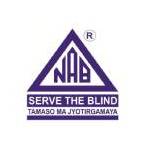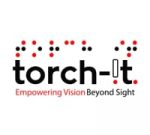In recent years, there has been growing awareness and activism surrounding diversity and equality, particularly in media representation. This movement advocates for the inclusion of all marginalized groups, emphasizing the importance of authentic voices and narratives. However, one group that is often overlooked in these conversations is individuals with disabilities. They are frequently portrayed in a narrow and stereotypical way that fails to reflect their true experiences and identities. These portrayals often resort to simplistic narratives that undermine the complexity and richness of their lives.
Media portrayals of individuals with disabilities are not only limited but often inaccurate, contributing to harmful stereotypes that perpetuate societal misconceptions. Such misrepresentation can result in stigma, influencing how individuals with disabilities are perceived and treated in everyday life. As a result, people internalize these portrayals, which can lead to discrimination and social exclusion. This cycle of misrepresentation and stigmatization is deeply tied to media depictions, as entrenched media narratives shape public attitudes and behaviors toward individuals with disabilities.
Approximately 1 billion people, or 15% of the world’s population, live with some form of disability, making accurate media representation a crucial issue. Advocating for more inclusive and diverse portrayals in media can foster a more empathetic and understanding society. It can also empower individuals with disabilities, affirming their identities and lived experiences. Moreover, unlike other minority groups, disability can affect anyone at any time due to accidents, illnesses, or age-related changes. This unique aspect underscores the importance of building an inclusive society that accommodates individuals of all abilities, recognizing that disability is not a fixed characteristic but a potential reality for anyone.
Historically, disability representation in media has been sparse and heavily skewed, contributing significantly to public misconceptions and stereotypes. In early 20th-century cinema, disability was frequently portrayed through a limited lens, where characters were either tragic figures or villainous outcasts. These portrayals often painted disability as an obstacle to a happy life or a source of evil, reducing these characters to mere plot devices rather than fully realized individuals. For instance, in Of Mice and Men (1939), Lennie Small, a character with an intellectual disability, is depicted as a figure whose potential for happiness is almost entirely dependent on the removal of his disability. This framing of his disability as something inherently tragic not only diminishes his character but also limits the audience’s ability to see disabled people as multifaceted, autonomous individuals (Hunt, 1991). Similarly, in Dr. No (1962), the villain Julius No, who has a prosthetic hand, is portrayed as sinister and bitter, reinforcing the dangerous stereotype that disability is linked to villainy. These portrayals are not just inaccurate but also harmful, as they imply that disability is something to be feared or pitied rather than understood. Media outlets consistently leaned into these tropes, avoiding nuanced or positive portrayals of disabled individuals. As a result, society internalized these limiting depictions, which bred fear, misunderstanding, and an underrepresentation of the true experiences of people with disabilities. The long-lasting impact of these misrepresentations has contributed to the continued marginalization of disabled individuals, leading to a pervasive stigma that still shapes how disabled people are viewed and treated today (Hunt, 1991; Morris, 2023).
The reliance on a limited set of stereotypes in media has reinforced societal misconceptions about disability, portraying disabled individuals in ways that diminish their full humanity. One of the most prevalent stereotypes is the helpless victim, a character whose disability is seen as a defining, limiting feature, leaving them dependent on others for survival or happiness. These characters are typically framed as being incapable of leading fulfilling lives unless their disability is miraculously cured, which fosters pity instead of empathy. In films like Forrest Gump (1994), Forrest, who has an intellectual disability, is portrayed as a naïve, almost childlike figure whose disability leads to comedic, awkward situations. While the film presents Forrest as a well-meaning character, the portrayal still reinforces infantilization, suggesting that people with disabilities are not to be taken seriously, which can perpetuate social exclusion and a lack of respect (Hunt, 1991). Another damaging stereotype is the evil villain, where disability, particularly mental health disorders, is used to fuel fear and misperceptions. In Unbreakable (2000), the character “The Beast,” who has Dissociative Identity Disorder (DID), is shown as a violent, uncontrollable figure with superhuman strength. This type of representation ties disabilities, especially mental health conditions, to dangerous behavior, despite the fact that people with mental health issues are overwhelmingly not violent (Morris, 2023). Such depictions foster anxiety and mistrust, contributing to a lack of understanding and empathy for individuals living with mental health challenges. Finally, the inspirational hero archetype, though often seen as positive, presents disability as something to be overcome, which can be just as limiting. Films and stories that depict characters with disabilities as “heroes” often center on their ability to “triumph over adversity,” yet in doing so, they frame disability as something that must be conquered rather than integrated into one’s identity. This can lead to unrealistic expectations for disabled individuals, pressuring them to perform beyond their capacities or reducing them to objects of inspiration rather than recognizing them as complete, multi-dimensional people. These stereotypical portrayals hinder societal progress toward meaningful inclusion, as they promote oversimplified views that disregard the complex realities of living with a disability. The consequences are far-reaching, contributing to social isolation, discrimination, and a lack of empathy, which continue to shape the lives of disabled individuals in harmful ways (Hunt, 1991; Morris, 2023).
The Role of Authentic Voices and Narratives
Including authentic voices and narratives of individuals with disabilities is crucial for accurate representation. When disabled individuals share their own stories, it ensures that their experiences are portrayed with the depth and nuance they deserve. This authentic representation is vital because it helps to convey the true complexities of living with a disability, which are often overlooked or misrepresented by those without lived experience. For instance, novels like “The Curious Incident of the Dog in the Night-Time” by Mark Haddon and “Wonder” by R.J. Palacio provide valuable insights into the lives of characters with disabilities, exploring how these experiences intersect with identity and personal growth. These narratives, crafted by authors who either have personal experience or have deeply researched the subject, avoid the pitfalls of simplistic or negative portrayals. Involving disabled individuals in the creative process, such as through consulting roles or as content creators, helps to avoid stereotypes and misrepresentations, ensuring that the narratives are both accurate and respectful. This practice not only improves the authenticity of the media but also empowers disabled individuals by giving them a platform to share their stories. Authentic voices bring credibility and relatability to the narratives, making them resonate more deeply with audiences and fostering a better understanding of the diverse experiences within the disability community. Furthermore, these voices challenge existing prejudices and expand the scope of representation, making the media landscape richer and more inclusive.
Case Studies of Positive Representation
Positive representation of individuals with disabilities in media can serve as powerful case studies that highlight the benefits of accurate and respectful portrayal. Video games like “The Last of Us Part II” and “Assassin’s Creed Valhalla” feature characters with disabilities, such as prosthetic limbs, portrayed in meaningful roles without sensationalizing their conditions. These games demonstrate a commitment to inclusivity by incorporating disabilities as part of the characters’ identities without making them the sole focus. This approach allows players to see disabled characters as fully realized individuals with strengths, flaws, and narratives independent of their disabilities. Moreover, these characters are portrayed as integral to the storylines, emphasizing their contributions rather than their limitations. Similarly, actors like Ali Stroker, who uses a wheelchair, and RJ Mitte, who has cerebral palsy, have become influential figures in the media, inspiring young people with disabilities to pursue their goals and advocate for their rights. These actors’ visibility and success challenge the pervasive notion that disability is a limitation, showing instead that it is one aspect of a multifaceted identity. Their achievements highlight the importance of representation, not just in front of the camera, but in all aspects of media production. Furthermore, television characters like Matt Murdock in “Daredevil” (who is blind) and Frank Underwood in “House of Cards” (who uses a wheelchair) showcase more realistic and respectful approaches to disability representation. These portrayals help to break down stereotypes by presenting disabled characters as complex, capable individuals who contribute meaningfully to their stories and society at large. They exemplify how accurate representation can shift public perceptions and foster a more inclusive society.
Impact of Accurate Representation on Society
Accurate and inclusive media representation of individuals with disabilities has significant societal benefits. It helps to normalize differences and challenge stereotypes, fostering greater empathy and understanding among able-bodied audiences. When the media accurately represents the lives and experiences of disabled individuals, it educates the public about the realities of living with a disability. This, in turn, reduces stigma and misconceptions, as it portrays disabled individuals not as objects of pity or as superhuman heroes, but as ordinary people with diverse stories and experiences. For youth with disabilities, seeing themselves accurately portrayed in media is crucial for their self-identity and ambitions, as it affects how they are seen and treated by their peers. Positive representation provides role models for disabled youth, showing them that they can achieve their goals and be successful in various fields. Additionally, accurate media representation has the power to influence public opinion and drive social change. When stories of persons with disabilities are told accurately, it can lead to increased awareness and support for policy changes, addressing barriers to accessibility and reducing discrimination. Documentaries like “Crip Camp: A Disability Revolution” have played a significant role in raising awareness about disability rights and prompting policy reforms. These societal shifts contribute to a more inclusive and empathetic world for everyone, as they promote understanding, acceptance, and the dismantling of barriers that prevent full participation by disabled individuals. By fostering an environment of inclusivity, accurate representation in media helps to build a society where diversity is celebrated, and all individuals are valued for their unique contributions.
In conclusion, the ongoing conversation about diversity in media must evolve to genuinely include individuals with disabilities, moving beyond token representation to embrace their full complexity. The media holds immense power in shaping societal attitudes, and by correcting historical misrepresentations, we can challenge the stereotypes that have long marginalized disabled individuals. These stereotypes often depict people with disabilities as one-dimensional figures—either as pitiable victims or as villains, which reduces the richness of their experiences. Such portrayals not only distort reality but also contribute to the societal stigma that still exists today. Media has an opportunity and responsibility to portray disabled individuals as multifaceted, capable, and dynamic people whose disabilities are just one part of their identities, not the defining trait. In the end, true diversity in media is not about simply adding marginalized groups into the mix—it’s about giving them the space to tell their own stories, to define themselves, and to contribute to a broader cultural narrative that is inclusive, equitable, and just.































